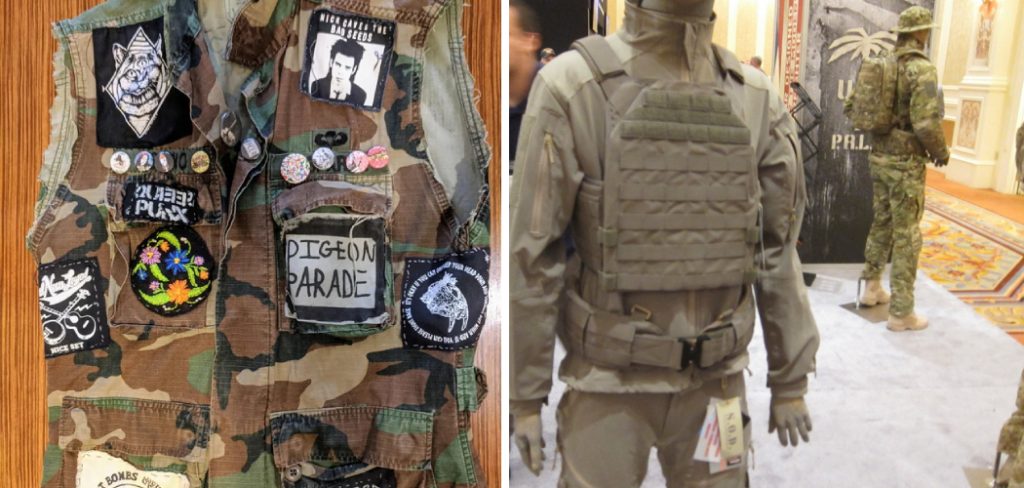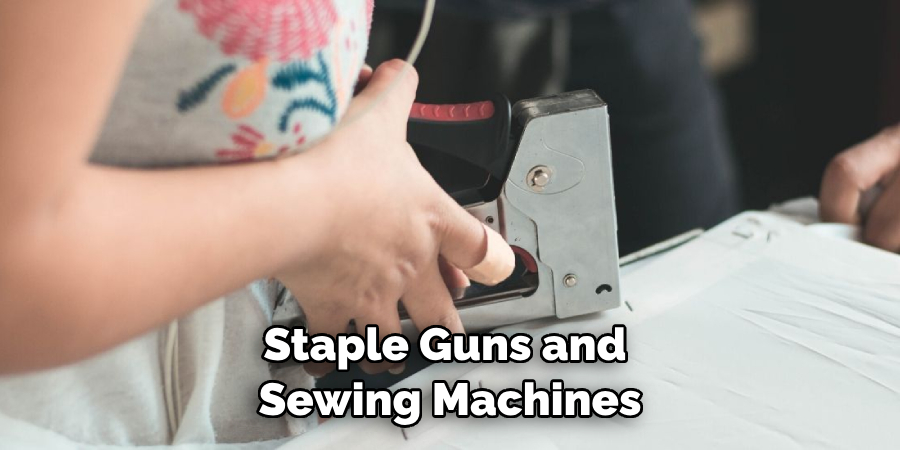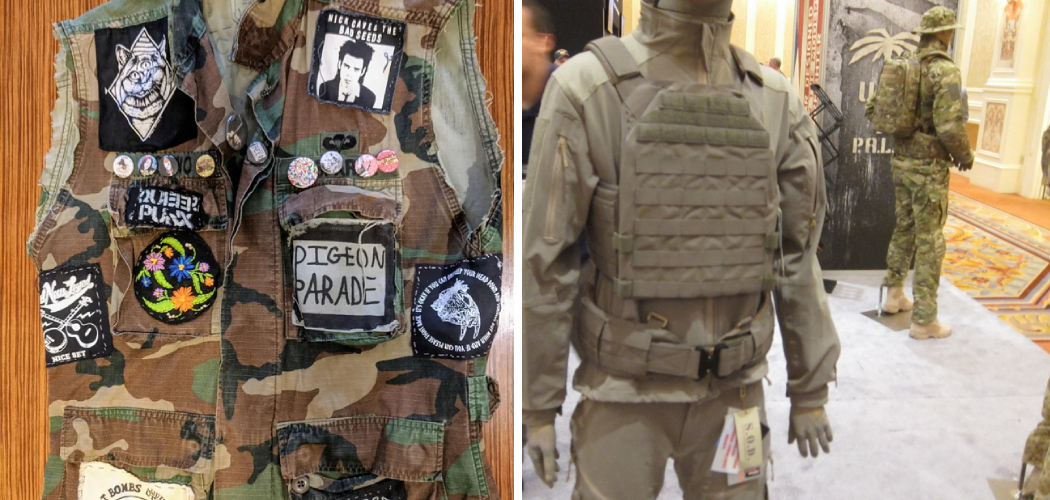In the realm of music and subculture, the battle vest stands as a proud emblem of self-expression, rebellion, and personal identity. Crafted from denim, leather, or canvas, this cherished garment serves as a canvas for individuals to showcase their musical preferences, beliefs, and passions through patches, pins, and artwork.

Much more than just a vest, it encapsulates a vivid history intertwined with punk, metal, and alternative subcultures. Creating a battle vest is a labor of love, requiring careful selection of patches that reflect one’s musical journey and values. Each patch, whether representing a favorite band, an ideology, or an artistic design, contributes to a tapestry of self-representation.
Assembling a battle vest demands patience, creativity, and a keen eye for aesthetics, as each addition carries a story that intertwines with the wearer’s narrative. So, let’s delve into how to make a battle vest, exploring the steps that transform a simple vest into a powerful statement of individuality and belonging.
Definition and Purpose of Battle Vests
A battle vest is a piece of essential equipment for police officers, military personnel, and security guards. It allows them to carry weapons, ammunition, flashlights, radios and other vital equipment in a secure and organized manner. Battle vests are durable and made from tough fabrics like Cordura or ballistic nylon that provide superior protection against water, wear and tear.
They come in a variety of colors and styles to meet the individual needs of the wearer, and can include features such as adjustable sizing, removable padding and MOLLE webbing for additional storage.
When choosing a battle vest, it’s important to consider factors like size, weight, comfort and mobility. It should be lightweight enough that it won’t slow you down or impede your movements, and the straps should be adjustable for a snug fit. Additionally, many battle vests come with additional pockets and pouches to store extra items like magazines, medical supplies and other equipment.
In order to properly use a battle vest, it is important to familiarize yourself with its features and get comfortable with how to adjust and secure the straps and accessories.
Additionally, it’s important to remember that battle vests should be checked regularly for signs of wear, tear or damage that could interfere with its performance in a critical situation. With proper care and maintenance, your battle vest can provide you with the protection and versatility necessary for any mission.

Historical Background and Evolution of the Battle Vest
The battle vest is an iconic piece of military history, having been used by soldiers worldwide to carry their gear in the field. Originally designed for use in medieval times and during the First World War, it has evolved over time to become a versatile and lightweight solution for today’s modern combat scenarios.
Its design allows for maximum levels of protection and storage space, enabling soldiers to carry their essential items while still remaining agile and mobile.
Modern battle vests are typically made of durable nylon or polyester fabrics and feature a variety of pockets, pouches, straps and compartments for carrying supplies such as weapons, ammunition, medical gear, food rations and communication equipment. Additionally, they often include integrated armor plates that provide enhanced protection against bullets and shrapnel.
The versatility of the battle vest means that it can be customized to suit any environment or mission, making it an indispensable tool for soldiers in the field. By providing a convenient way to store and transport essential combat gear, the battle vest has become a staple piece of equipment for armed forces around the world.

Materials and Tools
Selection of Vest Base
- Denim Jacket
- Leather Jacket
- Military Surplus Vest
Patches and Embroideries
- Collecting and Curating Patches
- Custom Embroidered Patches
Studs, Spikes, and Hardware
- Types of Studs and Spikes
- Necessary Hardware (pliers, fasteners, etc.)
10 Steps How to Make a Battle Vest
Step 1: Gather Your Materials
Creating a battle vest requires a combination of creativity and careful planning. To start, gather the necessary materials: a denim, leather, or canvas vest as your base, a variety of patches, pins, studs, and other embellishments, as well as thread, needles, scissors, and fabric glue. The type of vest you choose will dictate the overall aesthetic, so consider your preferences and the subculture you identify with.
Step 2: Choose Your Theme
Before diving into the creative process, decide on a theme for your battle vest. This could revolve around your favorite bands, genres, political ideologies, or personal symbols. Your theme will guide your patch and accessory choices, ensuring a coherent and impactful design.
Step 3: Collect Patches and Accessories
Now comes the exciting part – collecting patches, pins, and accessories that align with your chosen theme. Explore online marketplaces, thrift stores, music festivals, and record shops to discover a diverse array of patches that resonate with your interests. Consider both official band merchandise and custom-designed patches for a unique touch.
Step 4: Arrange and Plan
Lay out your patches on the vest to plan their arrangement. This step is crucial to achieve a balanced and visually appealing result. Experiment with different placements and combinations until you’re satisfied with the overall look. Use pins to temporarily hold the patches in place while you finalize your design.

Step 5: Sew or Glue Patches
Depending on your skill level and preference, you can either sew or glue the patches onto the vest. Sewing provides a durable and authentic look, but requires more time and skill. Gluing is a quicker alternative, but may not be as long-lasting. If sewing, use a strong thread and a needle appropriate for denim or leather. For gluing, choose fabric glue designed for heavy-duty materials.
Step 6: Add Embellishments
Enhance your battle vest’s visual appeal by incorporating studs, spikes, chains, and other embellishments. These elements can be strategically placed around patches or along seams to add texture and depth. Use pliers to attach studs securely, and ensure that any sharp elements are attached safely and won’t cause discomfort while wearing.
Step 7: Incorporate Personal Touches
Infuse your battle vest with personal touches that make it uniquely yours. This could involve hand-painted designs, handwritten lyrics, or small mementos that hold sentimental value. Such additions add an extra layer of authenticity to your creation.
Step 8: Consider Back and Inside
Don’t forget the back and inside of the vest. These areas offer more canvas for creativity and storytelling. You might reserve the back for a larger centerpiece patch or a more intricate design, while the inside can house hidden messages or images that hold personal significance.
Step 9: Ensure Quality and Durability
For a battle vest that stands the test of time, prioritize quality and durability. Double-check the stitching or gluing of patches and embellishments to prevent any potential mishaps during wear. Reinforce areas that might experience more stress, such as the edges of patches.
Step 10: Rock Your Creation with Pride
Once your battle vest is complete, put it on with pride and wear it as a testament to your unique identity and interests. Let it become a conversation starter and a way to connect with like-minded individuals in your chosen subculture. Over time, your battle vest will continue to tell your story as you add new patches and experiences to its narrative.
Safety Tips for Making a Battle Vest
When making a battle vest, safety should always be your top priority. Here are a few tips to keep in mind while constructing your own battle vest:

- When using heavy equipment such as staple guns and sewing machines, make sure you read the instructions and wear protective glasses or gloves if necessary.
- Always use the correct type of thread when stitching to avoid tearing or pulling of the fabric.
- Be sure to use a strong, durable material such as canvas for your battle vest in order to ensure maximum protection.
- Avoid using scissors near heat sources and always use caution when cutting.
- When attaching accessories like buckles and straps, make sure they are securely fastened so they won’t move or come undone during combat.
- Make sure all seams are securely sewn together and avoid using pins for long-term construction.
- When adding pockets, consider the size and placement of them to ensure they won’t be a distraction while in battle.
- Lastly, try on your battle vest once it is complete to check that it fits properly and is comfortable to wear.
By following these tips, you can be sure that your battle vest will provide the protection and comfort you need in order to win every battle!
Conclusion
In conclusion, making a battle vest isn’t complicated; it’s just a matter of knowing what you want and how to make it. All of the tips we covered in this blog post are designed to help you create a durable and personalized battle vest that will last for many years. Don’t forget to start with quality materials that can withstand wear and tear, such as reinforced seams or metal rivets.
Furthermore, ensure safety by selecting suitable padding, reinforcement, and buckles on the straps. And most importantly, use bright colors and patterns to make your battle vest truly unique! With these basics in mind, you’ll be ready to take on any challenge so get started today and show your friends how to make a battle vest!

